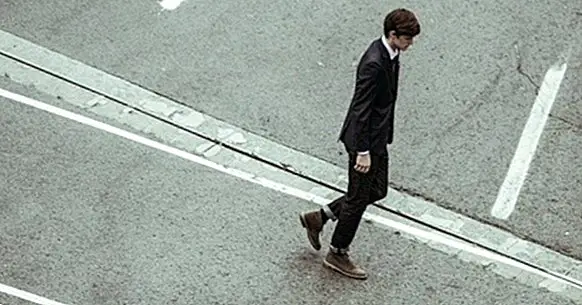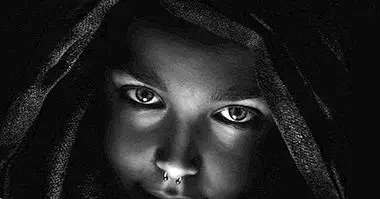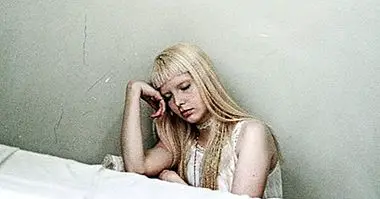The 7 types of anxiety (causes and symptoms)
We have all felt anxiety from time to time. It is a normal emotion. It is possible that, just before an exam, because of a work problem or because you needed to make an important decision, you experienced its symptoms.
This happens because anxiety is a normal reaction of people facing situations of stress and uncertainty. The problem arises when several anxious symptoms cause anguish or some degree of functional deterioration in the life of the individual who suffers it, since it affects the functioning in different areas of his life. For example: social and family relationships, work, school. Then the anxiety disorder is diagnosed.
Anxiety disorders: a very common pathology
The anxiety disorder It is one of the most common pathologies. Now, with proper treatment, people who suffer from it can learn to manage their symptoms and improve their quality of life.
Since there are notable differences between the different types of anxiety disorders, in today's article we explain the different types of anxiety:
1. Generalized anxiety disorder
Many individuals feel anxiety or worry from time to time, especially when they have to face situations that can be stressful: public speaking, playing a football game that means a lot or going to a job interview. This type of anxiety can make you alert, helping you to be more productive and to perform work more efficiently.
People who suffer in Generalized anxiety disorder (ADD) However, they feel anxiety and worry most of the time, not just in potentially stressful situations. These concerns are intense, irrational, persistent (at least half of the days for at least 6 months) and interfere with normal functioning in your daily life (activities such as work, school, friends and family), They are difficult to control.
You can know more about the symptomatology. the causes and treatment of this pathology in the article: "Generalized Anxiety Disorder: symptoms, causes and treatment"
2. Panic disorder
Thepanic disorder It is a very debilitating anxiety disorder and different from ADD. While generalized anxiety disorder is known as trait anxiety, it is more durable, panic disorder It is known as anxiety state, because its symptomatology is acute .
People with panic disorder experience feelings of death or the possibility of running out of air, which can cause both psychological and physical problems. In fact, the sensation can be so intense that it requires hospitalization.
In summary, the panic attack is characterized by:
- The presence of recurrent and unexpected panic attacks
- Worry after having had a panic attack that another will occur, at least for a month.
- Concern about the implications or consequences of a panic attack (like thinking that the panic attack is a sign of an undiagnosed medical problem). For example, some people have repeated medical tests due to these concerns and, despite the negative results of the tests, they still have fears of discomfort.
- Significant changes in behavior that are related to panic attacks (such as avoiding activities such as physical exercise, since it increases the heart rate).
Panic attacks reach their peak at 10 minutes and they usually last up to half an hour, making the person feel tired or exhausted. They can happen several times a day or only once every few years.
You can learn more about the panic attack in our article: "Panic attacks: causes, symptomatology and treatment"
3. Obsessive-Compulsive Disorder
Anxious thoughts can influence our behavior, which can be positive sometimes. For example, thinking that you may have left the oven on can make you go check it out. But nevertheless, If these kinds of thoughts are recurring, it can lead an individual to carry out unhealthy behaviors .
The Obsessive-Compulsive Disorder (OCD) It is characterized because the individual who suffers it has intrusive thoughts, ideas or images. These cause anxiety (obsessions), and cause the person to perform certain rituals or actions (compulsions) to reduce the discomfort.
Some examples of obsessive thoughts are: fear of becoming contaminated or feeling of doubt (for example, will I have closed the house door?), Among others. The compulsions are, for example: wash your hands, check repeatedly that the door is closed, count, repeatedly organize things, and so on.
In our article "Obsessive-Compulsive Disorder (OCD): what is it and how does it manifest?" You can go deeper into this psychopathologyFour.Posttraumatic Stress Disorder (PTSD)
This condition occurs when the person has experienced a traumatic situation that has caused great psychological stress , which can be disabling. When the person relives the event that caused the trauma, he may experience the following symptoms: nightmares, feelings of anger, irritability or emotional fatigue, detachment from others, and so on.
Due to the great anxiety that the individual feels. he can try to avoid situations or activities that remind him of the event that caused the trauma. Traumatic events can be, for example. a serious traffic accident, sexual abuse, torture during the war ...
Learn more about the anxiety disorder that can appear after a great emotional shock in our text: "Posttraumatic Stress Disorder or PTSD"5. Social phobia
The social phobia It is characterized by an irrational fear towards situations of social interaction. For example, individuals suffering from this type of anxiety disorder they feel a crippling anxiety when they have to speak in public , because they are afraid to be judged, criticized, humiliated and think that others will laugh at them in front of others. Social phobia is a serious disorder, and some individuals may even suffer it by talking on the phone or eating in front of other people
Although these people know that they should not feel so bad in the face of the triggering situations, they can not control their fear and anxiety, so they often avoid this type of situation. It is common to confuse social phobia with shyness, but not all shy people suffer from social phobia. According to a study published in the Journal Pediatrics in 2011, only 12 percent of people with shyness met the criteria of social phobia.
We explain more about this study and about social phobia in this link.
6. Agoraphobia
The agoraphobia usually associated with irrational fear of being in open spaces such as large streets or parks. Actually, the agoraphobic feels a strong anguish produced by situations in which he feels unprotected and vulnerable in the face of anxiety crises that are beyond your control. Therefore, fear is not produced by these spaces per se, but by the consequences of being exposed to that place, in which you feel helpless. This means that in the most serious cases the patient can be confined to his home as a form of avoidance.
If you are interested in learning more about agoraphobia, click here.
7. Specific phobia
A specific phobia is an anxiety disorder that is characterized by a strong irrational fear of a stimulus, for example, a situation, an object, a place or an insect . The person who suffers a phobic disorder does everything possible to avoid that stimulus that causes anxiety, and this avoidance behavior can interfere with the normal functioning of their daily lives.
Specific phobias are many, some of them very strange. Some phobias are known and others not so much, such as coulrophobia or fear of clowns, philophobia or fear of falling in love, amaxophobia or fear of driving.
The DSM IV manual distinguishes between five subtypes of specific phobias. Know them in this article: "Types of phobias: exploring the disorders of fear"


















